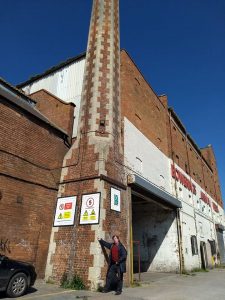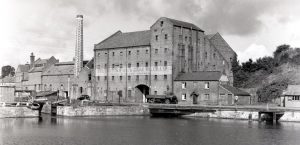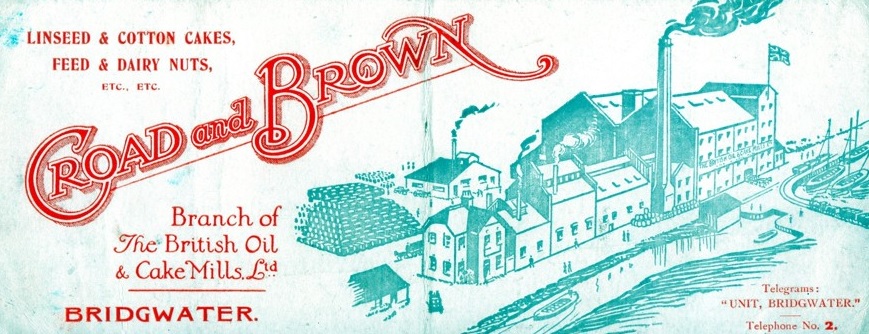
At a meeting today of the Bridgwater Town Council Planning Panel, attended by representatives of the Civic Society and Sedgemoors new Conservation officer, Mark Lidster, members voted to request the listing of the Victorian era Bowerings seed mill on the docks with it’s harlequin chimney, the last industrial chimney in Bridgwater. The proposal was put by Chair Cllr Mick Lerry (Bridgwater Victoria) and seconded by Cllr Brian Smedley (Bridgwater Westover) and passed unanimously.
Cllr Smedley , Leader of the Town Council, said “Following public concerns about the possible demolition of the chimney and a call by the Civic Society for the Town Council to quickly intervene to safeguard this key bit of our heritage, we brought the partners around the table to start the process. While the setting is within a conservation area, the building itself is not listed -which includes the chimney, although many thought it had been. The site will now be immediatly deemed a ‘Non Designated Heritage Asset’ while the process of listing starts. This should ensure that any potential developers work with what is there rather than demolish and the eventual listing means the building will be protected by law.”

SDC conservation officer Mark Lidster said the building dated back to 1859 and while the chimney was of special heritage interest the building also included a group of Edwardian offices . The move towards listing and the redesignation would allow planners to now give developers a steer towards regeneration. The timescale would realistically be some 4-6 months.
History of Bowerings Mill
Bridgwater historian Miles Peterson, explains the history of the Mill.
The Linseed Oil and Cotton Cake Mill on the north-west corner of the docks was founded in 1869 and the core of the present buildings dates to about then. The purpose of the mill was to crush flax in order to extract linseed oil, which had a range of uses, including as a component of oils paints or as a wood preservative. The leftover flax mush, called cake, was used as a fertiliser and as animal feed. Initially there were fifteen workmen employed, but at the mill’s height of prosperity there were over seventy. The company was initially referred to as either ‘the Bridgwater Oil and Cake Mills’ or referred to its proprietors ‘Messrs Croad and Brown’. Exactly who Croad was is currently obscure. Brown is probably Edwin Brown JP, who lived in Hamp Green House. He died in 1937, aged 91 and was buried in the Wembdon Road Cemetery.

A huge fire engulfed the mill on 26 February 1892, although luckily no one was injured. Today most residents of the area will recall several occurrences of fire there over the last few decades, most recently in January 2016. In 1892 to 1895 Croad and Brown commissioned architect Basil Cottam to redesign the mill and in 1899 they asked for designs for new offices. They also commissioned new machinery from Rose Downs and Thompson Ltd of Hull, manufacturers of general engineering products, oil mill machinery and food processing equipment. The firm was taken over by the British Oils and Cake Mill Ltd in 1899. They closed after the end of the First World War.

This letterhead shows the mill as it was in about 1900. Note the train on the far right, and the horses and carts. Almost all of this survives today. The small building on the far left is gone except for one wall. The small cottage type building on the far right is completely gone. The section between the large block and the chimney has been built up. Bridgwater historian Joyce Hurford’s mother worked in the mill when she was young: ‘they were not allowed to stop for lunch, so you took sandwiches with you but if you did not watch out the rats would run down and eat them’. The mill was taken over by Bowerings Provenders (animal feeds) by 1960, although probably in earlier decades. After this date the main block extended out to the great chimney. The little cottage to the east was still standing at that time. Bowerings, the current owners of the mill, started life as a bakery in North Street.
